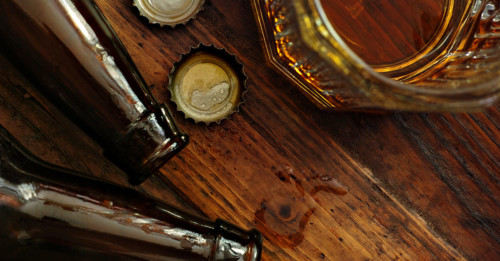Alcohol content in beer matters for a few reasons. For one, you probably want to know how much power each bottle packs before you go for that third beer. But alcohol level can also tell you what to expect from the flavor of a beer, and has an impact on the overall body and mouthfeel.
Alcohol is the result of fermentation—a byproduct of yeast metabolizing some tasty grain-derived, fermentable sugars into alcohol and CO2. The final alcohol level in a given beer depends on the yeast used, the amount of sugar digested, and the fermentation method.
The way a brewer measures that final alcohol level—what is called “Alcohol by Volume,” or ABV—is with something called a hydrometer. The hydrometer is floated first in the wort and then in the finished fermented beer to test for change in density (due to loss of sugar). Just in case you hear the terms tossed around, and you don’t want to feel intimidated, the density of the wort is called the Original Gravity (OG) or Specific Gravity (SG) and the density of the fermented beer is called the Final Gravity (FG). The difference between them is multiplied by 131 to convert the change in gravity to a percent-by-volume. And that’s what really matters.
Not that alcohol content is really the “point” of beer, historically. Remember, those first early beers consumed by ancient Egyptians after a hot day of pyramid building were probably fairly low alcohol (and fairly high nutrition). Cut to today and you’ve got breweries pushing the double digits in alcohol content.
That’s important because alcohol influences flavor, or how flavor is perceived; just think of the “hot” flavor of a really high proof grain alcohol and you’ll get a sense for the extremes of alcohol’s influence on flavor. But unlike, say, barrel proof whiskey, you won’t really be able to taste the alcohol if the beer is balanced. Of course, this being the era of craft beer boundary-pushing, there are some beers climbing into the upper limits of ABV. (If the average beer has 4 to 5% ABV, then something like, say, BrewDog’s Tactical Nuclear Penguin—made by subjecting an already 16-month aged 10% Imperial stout to -2F temperatures and fishing out non-alcoholic ice—is about seven times more alcoholic than normal, and so should be sipped, not swigged.)
Thankfully, the majority of beer, even craft beer, clocks in at much lower ABVs. Session beers, for instance, are so-called because of their low alcohol content, around 4.5%. Pale ales generally have moderate alcohol content, while IPAs and Imperial styles are higher. But this is the tip of the tip of the iceberg (icebeerg?). Your best bet is to start with the label. Of course, ABV isn’t actually required by law to be on a beer label (it varies state to state), so be aware. And sip slowly.
